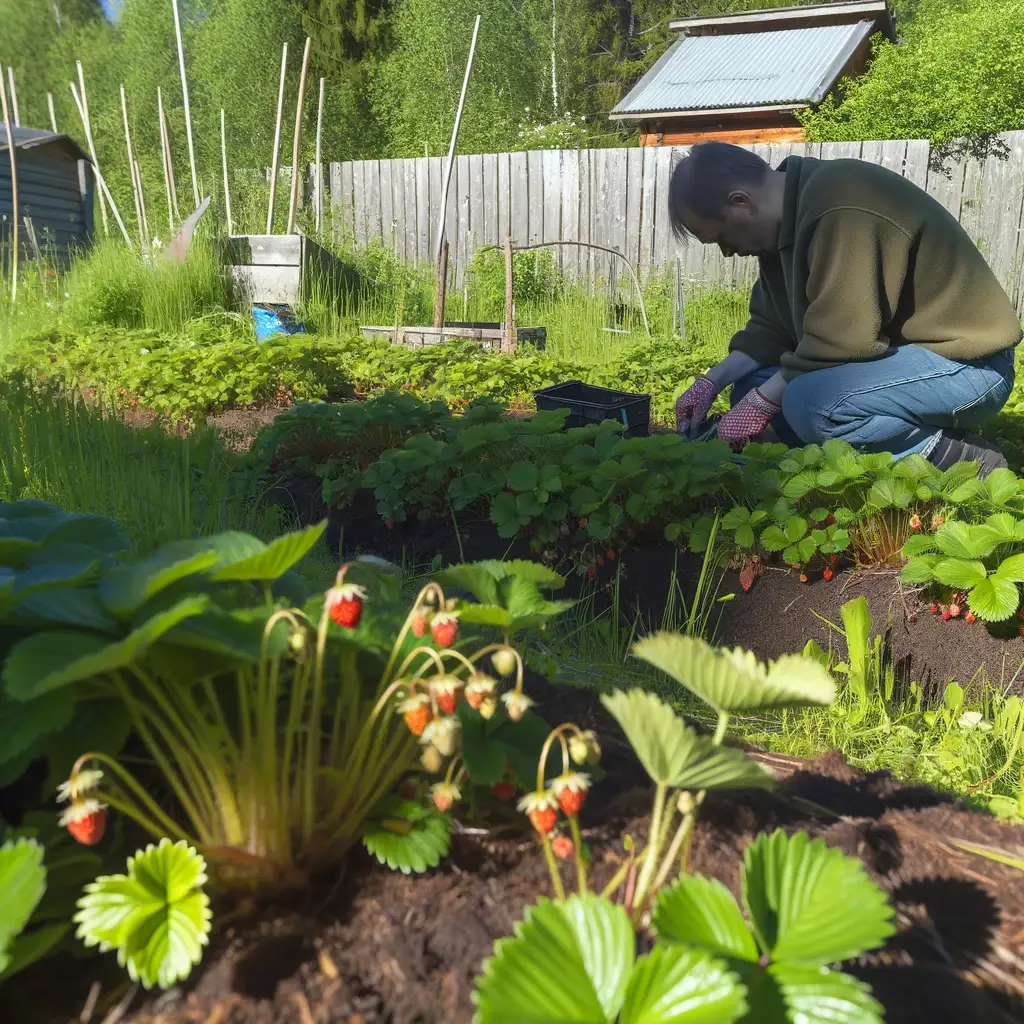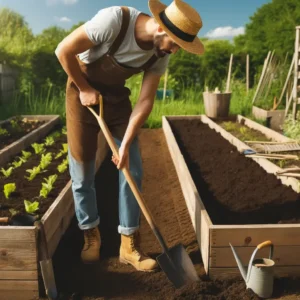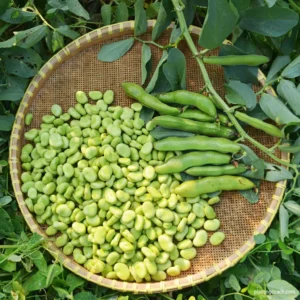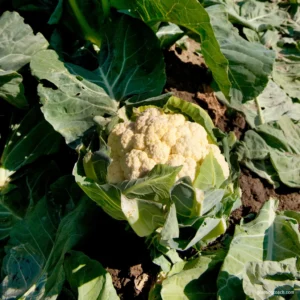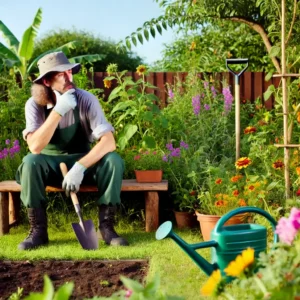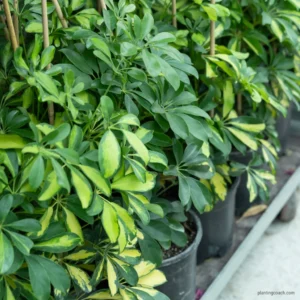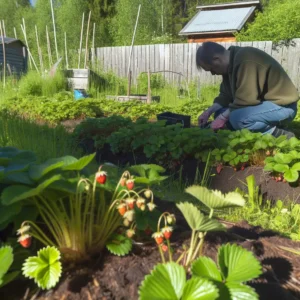Wild strawberries, also known as Fragaria vesca, are a delightful addition to any garden. These small, sweet berries are packed with flavor and offer a range of benefits, from increasing the beauty and attractiveness of your garden to providing a delicious and nutritious fruit. Wild strawberries, or woodland strawberries, are particularly favored for their ability to thrive in various environments, including woodlands, meadows, and gardens. This comprehensive guide will walk you through everything you need to know about How to Grow Wild Strawberries (Fragaria vesca), ensuring you can enjoy a bountiful harvest of these charming berries.
How to Grow Wild Strawberries (Fragaria vesca)
Understanding Fragaria Vesca
Fragaria vesca, commonly known as wild strawberries or woodland strawberries, are perennial plants that belong to the Rosaceae family. Unlike their cultivated cousins, wild strawberries are smaller but boast a more intense flavor. They are characterized by their trifoliate leaves, white flowers, and small, red fruits dotted with tiny seeds.
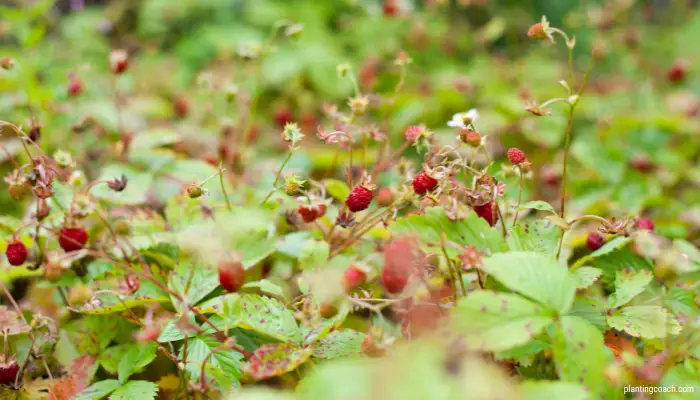
Wild strawberries have a long history of use in traditional medicine and culinary practices. They are not only delicious but also rich in vitamins, antioxidants, and minerals, making them a healthy addition to your diet. These plants are hardy and adaptable, capable of growing in a variety of conditions, from full sun to partial shade.
Optimal Conditions for Growing Wild Strawberries
Providing the right growing conditions is essential to ensuring your wild strawberries thrive. They prefer well-draining soil that is rich in organic matter. They thrive in slightly acidic to neutral pH levels, ideally between 5.5 and 7.0. Consider amending your soil with compost or sand to improve drainage if it is heavy or clayey.
Sunlight and Temperature
Wild or woodland strawberries can grow in a range of light conditions, but they prefer dappled sunlight or partial shade. In hotter climates, providing some afternoon shade can protect the plants from scorching and help retain soil moisture. They are hardy in USDA zones 3 to 10, making them suitable for a wide range of climates. These plants can tolerate frost but benefit from mulch during the winter months to protect their roots.
Planting Wild Strawberry Plants
Planting wild strawberries involves a few careful steps to ensure they are established well and grow healthily:
Choosing the Right Location
Select a location that receives morning sun and afternoon shade. Woodland edges, garden borders, and areas under taller plants are ideal. Ensure the area is free from weeds, as they can compete with young strawberry plants for nutrients and water.

Preparing the Soil
Prepare the soil by removing any weeds and debris. Loosen the soil to a depth of about 12 inches and mix in organic compost to enrich it. If the soil is heavy, consider adding sand or fine gravel to improve drainage.
Planting Techniques
Plant wild strawberries in early spring or late fall when the weather is cooler. Space the plants about 12 to 18 inches apart to allow for adequate air circulation and growth. Dig a hole large enough to accommodate the root ball, place the plant in the hole, and cover the roots with soil, pressing gently to remove air pockets. Water the plants thoroughly after planting to help them settle in.
Watering and Feeding Wild Strawberries
Proper watering and feeding are crucial for the health and productivity of wild strawberries:
Watering
Wild strawberries require consistent moisture, especially during the growing season. Water the plants regularly to keep the soil evenly moist but not waterlogged. Aim to water in the morning to allow the foliage to dry during the day, reducing the risk of fungal diseases. Mulching around the plants can help retain soil moisture and suppress weeds.
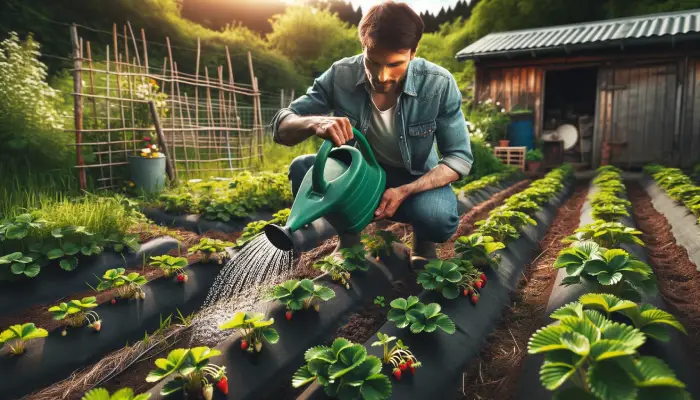
Feeding
Feeding your wild strawberries with the proper nutrients supports their growth and fruit production. Use a balanced, all-purpose fertilizer or a fertilizer formulated specifically for strawberries. Apply fertilizer in early spring when new growth begins and again after the first harvest to encourage continuous fruiting. Avoid over-fertilizing, as this can lead to excessive leaf growth at the expense of fruit production.
Caring for Wild Strawberry Plants
Regular maintenance ensures your wild strawberry plants remain healthy and productive.
Pruning
Pruning is essential to manage the growth of wild strawberries. Remove any dead or diseased leaves and stems to improve air circulation and reduce the risk of pests and diseases. After the fruiting season, cut back the runners (long stems that spread from the main plant) to direct the plant’s energy back into producing fruit.

Weeding
Keep the area around your wild strawberries free from weeds, which can compete for nutrients and water. Regularly inspect the plants and remove any weeds by hand or with a hoe, being careful not to disturb the strawberry roots.
Pests and Diseases
Wild strawberries can be susceptible to pests such as aphids, slugs, and birds. Use organic pest control methods such as neem oil, insecticidal soap, or hand-picking pests. Protect the plants from birds by using netting. Common diseases include powdery mildew and gray mold, which can be managed by ensuring good air circulation, avoiding overhead watering, and removing infected plant parts.
Propagating Fragaria Vesca Plants
Propagating Fragaria vesca allows you to expand your garden and share plants with others:
Propagation by Runners
Wild strawberries produce runners that can be used for propagation. In late summer or early fall, select healthy runners with well-developed roots. Carefully dig up the runner and transplant it to a new location, following the same planting guidelines. Water the newly transplanted runner thoroughly.
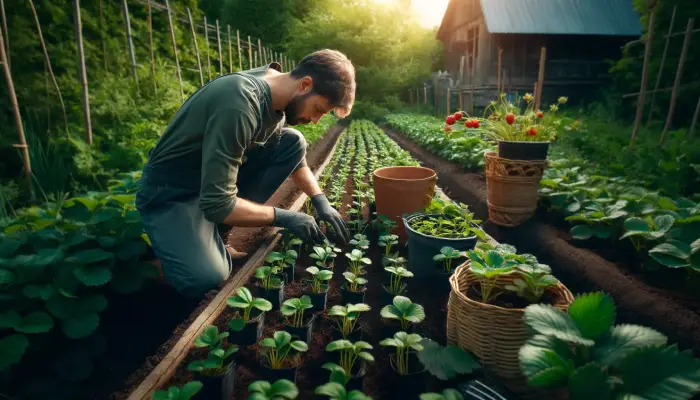
Propagation by Seeds
Growing wild strawberries from seeds is another propagation method, though it requires more patience. Collect seeds from ripe berries or purchase them from a reputable supplier. Sow the seeds in a seed tray filled with a seed-starting mix. Lightly cover the seeds with soil and keep the tray in a bright, warm location. Water regularly to keep the soil moist. Once the seedlings have several true leaves, transplant them into individual pots or directly into the garden.
Benefits of Propagation
Propagating your own Fragaria vesca plants allows you to maintain a healthy and productive garden. It also ensures you have a steady supply of plants to replace older, less productive ones. Sharing propagated plants with friends and family is a rewarding way to spread the joy of gardening.
Harvesting and Using Wild Strawberries
Knowing when and how to harvest wild strawberries ensures you enjoy their peak flavor.
Harvesting
Wild strawberries typically ripen from late spring to early summer. The fruits are ready to harvest when red and easily detach from the plant. Harvest regularly to encourage continuous fruiting. Use a gentle touch to avoid bruising the delicate berries.

Storing
Freshly picked wild strawberries are best enjoyed immediately but can be stored in the refrigerator for a few days. To store, place the unwashed berries in a single layer on a paper towel-lined tray or container. Washing them before storage can cause them to spoil faster.
Using
Wild strawberries are versatile and can be used in various culinary applications. Enjoy them fresh, add them to salads, or use them in desserts such as cakes, pies, and jams. They also make a delicious topping for yogurt, cereal, and ice cream. For a refreshing treat, try blending them into smoothies or making strawberry-infused water.
Troubleshooting Common Problems with Wild Strawberries
Even with the best care, wild strawberries can encounter issues. Here’s how to address some common problems:
Pests
- Aphids: These small, sap-sucking insects can weaken plants and spread diseases. Control them by spraying them with insecticidal soap or neem oil.
- Slugs and Snails: These pests feed on leaves and fruits, leaving behind holes and slime trails. Use organic slug pellets or create barriers with crushed eggshells or diatomaceous earth.
- Birds: Birds love strawberries and can quickly decimate your crop. Protect your plants with bird netting or scare tactics such as reflective tape or garden owls.
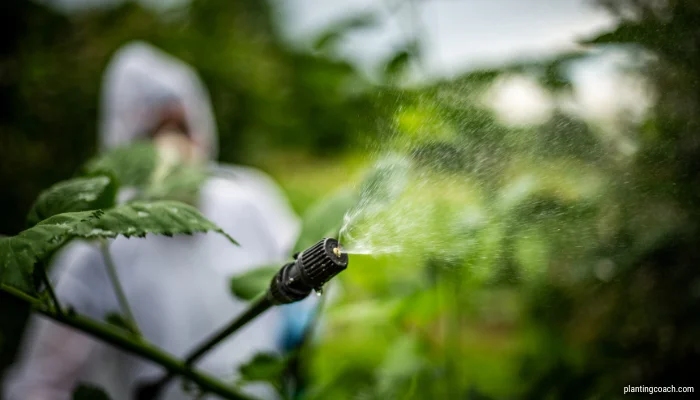
Diseases
- Powdery Mildew: This fungal disease appears as a white, powdery coating on leaves. Improve air circulation, avoid overhead watering, and remove affected leaves. Use a fungicide if necessary.
- Gray Mold (Botrytis): This disease causes fruit to rot and develop a gray, fuzzy mold. Ensure good air circulation, remove affected fruits, and avoid water splashing on the leaves and fruits.
Environmental Stress
- Yellow Leaves: Yellowing leaves can indicate various issues, including overwatering, nutrient deficiencies, or poor drainage. Adjust your watering schedule, improve soil drainage, and ensure your plants receive balanced nutrition.
- Stunted Growth: If your wild strawberries are not growing well, check for root competition from nearby plants, inadequate light, or poor soil conditions. Address these issues by relocating the plants, improving soil quality, and ensuring adequate sunlight.
Summary
Growing wild strawberries, or Fragaria vesca, is a rewarding experience that offers delicious fruit and increases your garden’s beauty. By understanding the optimal conditions for planting, watering, feeding, and maintaining your woodland strawberry plants, you can ensure a fruitful harvest. Regular pruning, weeding, and pest management will keep your plants healthy and productive. Whether you’re enjoying fresh strawberries straight from the garden or using them in your favorite recipes, the effort you put into growing wild strawberries will be well worth it.
FAQ
Q1: How do you grow Fragaria?
- To grow Fragaria, start by selecting a sunny or partially shaded location with well-draining soil. Prepare the soil by adding compost for organic matter. Plant the seeds or runners in early spring or late fall, spacing them about 12 to 18 inches apart. Water regularly to keep the soil moist but not waterlogged, and mulch around the plants to retain moisture and suppress weeds.
Q2: What are the best conditions for wild strawberries?
- Wild strawberries thrive in well-draining soil rich in organic matter, with a slightly acidic to neutral pH (5.5 to 7.0). They prefer bright, indirect light or partial shade, especially in hotter climates. Consistent moisture is essential, so water regularly and mulch to retain soil moisture. Woodland edges and garden borders are ideal locations.
Q3: Is Fragaria vesca everbearing?
- Fragaria vesca, or wild strawberries, are not typically classified as everbearing. Instead, they usually produce one main crop of fruit in late spring to early summer. However, with proper care and favorable conditions, some plants may produce a smaller second crop later in the season.
Q4: How to grow strawberry plants?
- To grow strawberry plants, choose a sunny or partially shaded site with well-draining soil. Prepare the soil with compost and plant the strawberry runners or seeds in early spring or fall, spacing them adequately. Water regularly to maintain consistent soil moisture, mulch to retain moisture and suppress weeds, and fertilize with a balanced fertilizer during the growing season.
Q5: Where do strawberries grow best?
- Strawberries grow best in well-draining, fertile soil with a slightly acidic to neutral pH. They thrive in locations that receive full sun or partial shade, particularly in hotter climates. Providing consistent moisture and good air circulation will help ensure healthy growth and abundant fruit production. Garden borders, raised beds, and containers are excellent options for growing strawberries.
